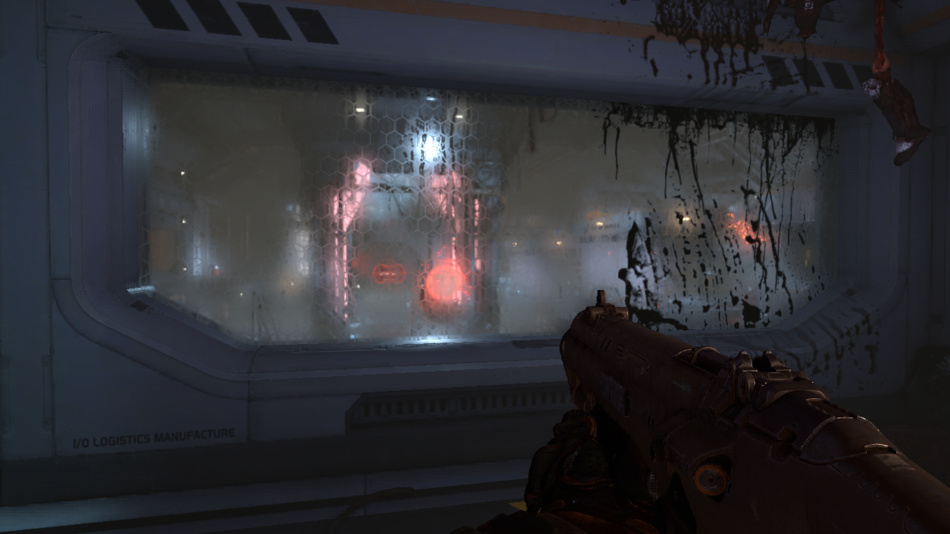Adjustable, blurred Refraction shaders created with Amplify Shader Editor using Command Buffers. Cool to create glass like materials. Works without Amplify Shader Editor. Inspired by an Unity blog entry.
This implementation was initially created for use in Pizza Connection 3, but I adapted the approach for general usage.
To create cool looking glass materials it's nice to have refraction on the surfaces. In recent games, glass materials sometimes also feature a dynamic blurred refraction on their surface.
See the new DOOM for example:
To achieve this effect in Unity the classical approach is to use a GrabPass in your shader & blur several instances of the same screen based texture. Since Unity 5 there is an alternative to this approach using CommandBuffers. See this blog entry for more detail. TL;DR: Using Command buffers is more performant, flexible and easier to use than a normal grab pass in the above case.
Since I haven't found any sources except the Unity blog entry on how to achieve the desired effect using Command Buffers I implemented it on my own by adapting the example provided by Unity. To create the main shaders I used the Amplify Shader Editor (ASE).
Disclaimer: I'm no expert in Shader/Graphics Programming, I just felt the urge to contribute and help others. Everyone is encouraged to contribute to this project and make it better. :)
The blur amount can be tweaked as a simple float property.
 Reflectivity, Distortion, Emission contribution and a lot of other things can be tweaked.
Reflectivity, Distortion, Emission contribution and a lot of other things can be tweaked.

- Copy the contents of this repository into your Unity project.
- Add GrabScreen.cs to the camera you want to capture the screen from. (This creates 2 global screen textures for our shaders: Blur & No Blur)
- Create a new Material and use one of the CommandBufferRefraction shaders, found under Custom/CommandBufferRefraction or Custom/CommandBufferRefractionCheaper
- Apply your material to a renderer in your scene.
- Press play & watch the material in the Game View
Note: To give maximum flexibility 3 textures are used to define the material. The property name already shows you which channels of the texture are used for which purpose.
Note: This is the more easy to use, faster version of the shader (less texture calls). A lot of the properties are tweaked by using sliders.
The shader was created using the Amplify Shader Editor from the Asset Store. Luckily, you can use these shaders without this asset. However if you have the shader editor you can directly open the shaders in ASE.
Below be shader graphs:
The CommandBufferRefractionShader.
 The cheaper version (fewer texture calls).
The cheaper version (fewer texture calls).

- Unity Editor: Shaders don't preview correctly in the Scene View
- Performance: We create 2 global textures with the command buffer (blurred and non blurred), they are smaller than the actual camera screen size, but this is still performance heavy, so watch out.
- Forward Based: We need to render in the transparent queue, so this shader works only with forward rendering.



